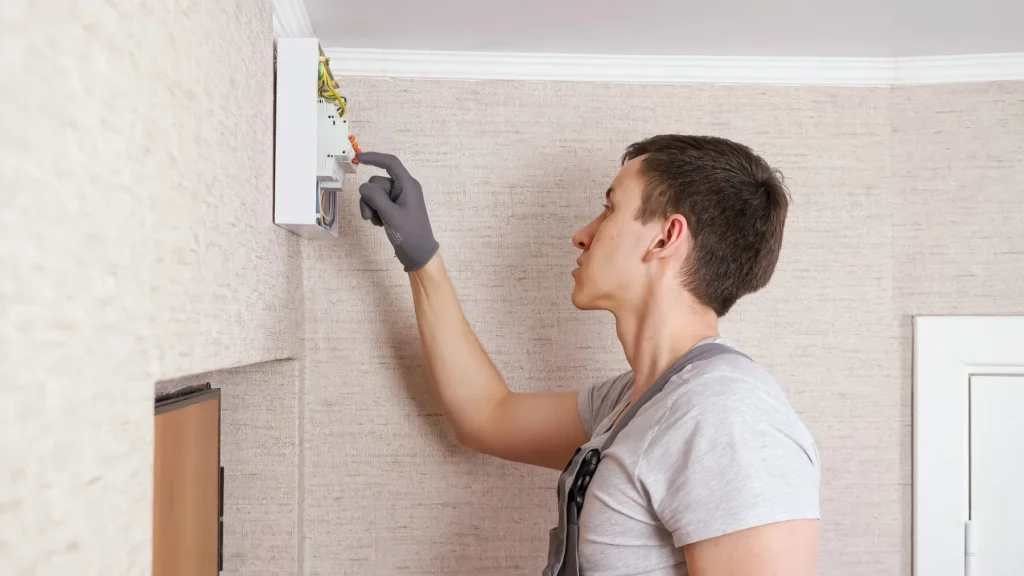In the chaos of a fire emergency, every second counts. Knowing how and when to shut off your utilities — gas, electricity and water — can protect your home from further fire damage and potentially save lives. Here’s how to do so safely to minimize losses.
Why Shutting Off Utilities Matters in a Fire Emergency
It’s probably the last thing you’re thinking of when you’re trying to get out of your home or calling emergency services, but utilities can quickly become additional hazards in the event of a fire. A ruptured gas line, for instance, might cause an explosion, faulty wiring can spark secondary fires, and water left running could cause additional property damage or interfere with firefighting efforts.
Utility shut-off points vary by home, so it’s crucial to locate them now, not during an emergency. Mark each location with a label and ensure all household members can find them. Knowing these locations is a key part of emergency readiness.
Proactive utility shutoffs can prevent further damage, make your home safer for first responders and reduce the complexity of any homeowners insurance quote evaluation post-disaster. Insurers appreciate efforts to minimize risk, which may even contribute to finding cheap house insurance options down the road.
How to Safely Shut Off the Gas Supply
Natural gas is highly flammable, and leaks during a fire can quickly escalate into catastrophic explosions. To shut off your gas supply safely:
- Locate the gas meter. It’s typically outside your home, often on a side wall or near the curb.
- Find the shutoff valve. Look for a pipe running from the meter to your house. There should be a valve near the meter where the pipe meets it.
- Use a wrench. Turn the valve one-quarter turn until it’s perpendicular to the pipe to stop the flow of gas.
- Smell for leaks. A rotten egg smell is a sign of gas, and if you smell this, you should evacuate immediately without trying to shut off the valve.
Turning Off Electricity to Prevent Electrical Fires
Electrical fires are a common secondary threat in emergencies. In fact, water from firefighting efforts or fire-damaged wires can spark new flames. To shut off your electricity safely:
- Locate your circuit breaker panel, which is typically found in a basement, garage or utility closet.
- Flip the main breaker. This large switch is usually labeled and located at the top of the panel. Flipping it off cuts power to the whole house.
- Avoid water contact. If the breaker panel is wet or surrounded by water, don’t touch it. Instead call emergency services, if you haven’t already.
When and How to Shut Off the Water Supply
While not immediately dangerous like gas or electricity, water can exacerbate damage during a fire. Burst pipes due to high heat or firefighting efforts can flood your home, causing additional structural and mold issues. When shutting off your water supply:
- Find the main shutoff valve. This is often near the water meter, in basements or garages, crawl spaces or where the main line enters the home.
- Turn the valve clockwise. A ball valve turns 90 degrees; a gate valve requires multiple clockwise turns.
- Drain faucets. Open a faucet after shutting off the valve to relieve pressure and confirm the water is off.
Tools You May Need in an Emergency
Keeping a few essential tools in an accessible location can make a big difference. Store them in an emergency utility kit near your breaker panel or exit route.
- Adjustable wrench
- Flashlight with extra batteries
- Inusulated electrical gloves
- Utility key or meter box key for access
When to Evacuate Without Attempting Shut-Offs
Your safety comes first. If any of the following conditions apply, evacuate immediately and do not try to shut off utilities:
- Fire or heavy smoke is between you and the shutoff point
- You smell gas or hear hissing
- The utility area is flooded or visibly damaged
- You’re unsure of the process
Contact emergency services and wait for the all-clear. Your actions should never compromise personal safety; even the best home insurance coverage can’t replace a life.
Creating a Household Emergency Utility Plan
The best way to ensure everyone in the home knows what to do is to have a plan:
- Create a diagram of your home marking all utility shutoff locations.
- Assign everyone in the home tasks based on proximity and capability.
- Practice shutting off each utility every six months so you’re familiar with the process.
- Ensure your homeowners insurance quote reflects your safety preparations. Some providers offer discounts for documented emergency plans, alarms and upgrades.
In a fire emergency, shutting off your utilities can be the difference between minor damage and a total loss. Understanding when and how to shut off gas, electricity and water not only keeps you and your family safe but can also positively impact your insurance claims process.

